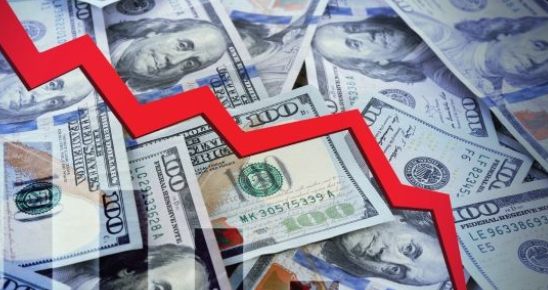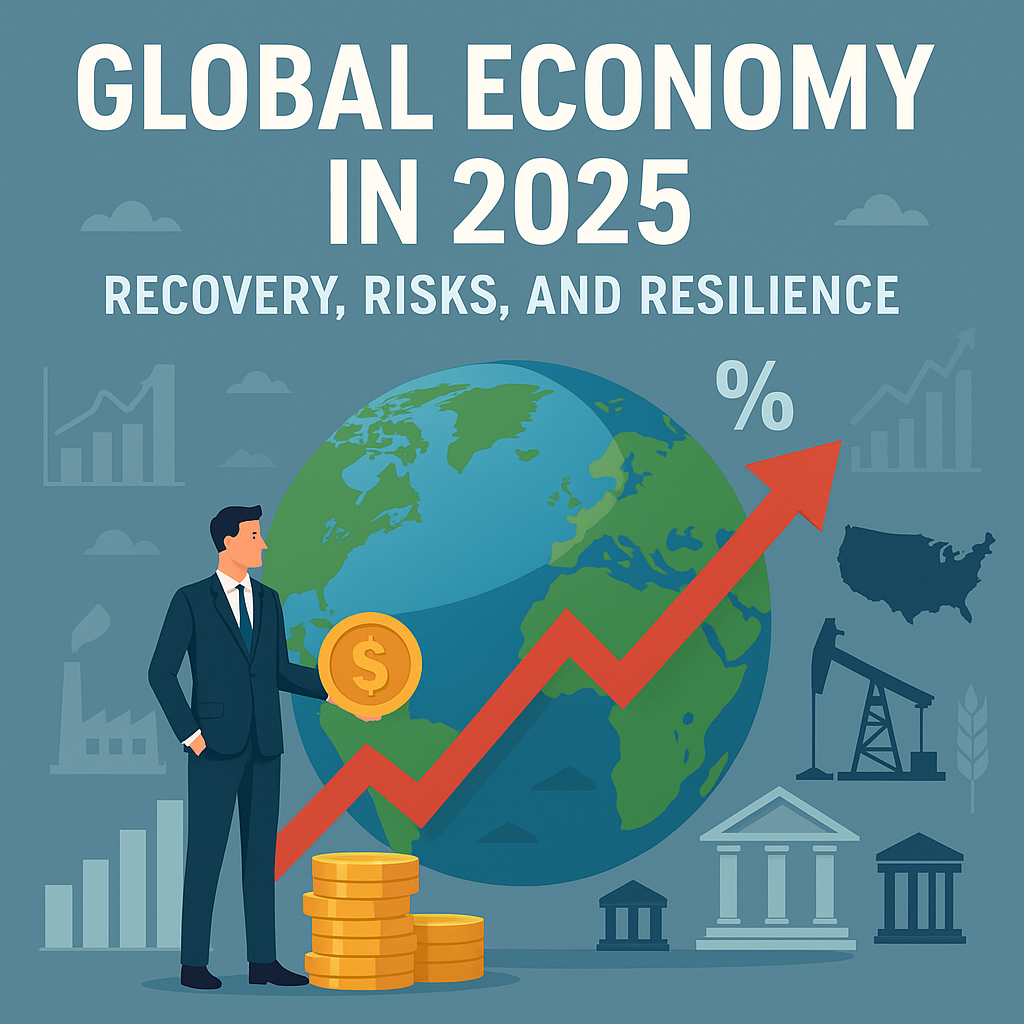As the world steps further into 2025, the global economy finds itself navigating a complex landscape shaped by post-pandemic adjustments, geopolitical tensions, inflationary pressures, and technological transformation.

While recovery remains on the horizon, new and old risks continue to threaten progress, leaving policymakers and businesses striving to strike a balance between growth and stability.
Post-Pandemic Growth Slows But Persists
The initial rebound from the COVID-19 pandemic in 2021 and 2022 was sharp, driven by pent-up demand, massive fiscal stimulus, and aggressive monetary easing. However, by 2024 and into 2025, that momentum has started to taper. According to the International Monetary Fund (IMF), global GDP is expected to grow by approximately 2.9% in 2025, slightly down from 3.2% in 2024. The slowdown is particularly pronounced in advanced economies, where higher interest rates and fading stimulus effects are weighing on growth.

In the United States, GDP growth is forecasted at 1.8%, with inflation now hovering around 2.5% after peaking above 8% in 2022. The Federal Reserve has maintained interest rates at relatively high levels to anchor inflation expectations, which has curbed consumer spending and business investment. Meanwhile, in the Eurozone, growth remains fragile, projected at just 1.2%, as Germany and France face industrial slowdowns and energy cost concerns.
Emerging markets, especially in Asia, remain the bright spot. India continues its trajectory as one of the fastest-growing major economies, with a projected 6.4% growth rate in 2025, driven by domestic consumption, infrastructure investments, and a burgeoning tech sector. China, despite facing structural challenges, is expected to post 4.8% growth, aided by stimulus policies aimed at stabilizing its property sector and promoting domestic innovation.
Inflation and Interest Rate Dilemmas
Inflation continues to be a global concern, albeit with varying intensity across regions. Central banks in most developed economies, including the U.S. Federal Reserve, the European Central Bank, and the Bank of England, have maintained tight monetary policies to ensure inflation returns to their respective targets. This has resulted in higher borrowing costs, which are dampening private investment and home buying.
In developing economies, inflation has been more volatile due to currency depreciation, imported food and energy costs, and climate-related disruptions to agricultural production. For instance, in parts of Sub-Saharan Africa and Latin America, inflation remains above 7%, complicating monetary policy and increasing pressure on governments to subsidize basic goods.
The World Bank has warned that prolonged high interest rates could strain developing nations already facing high debt levels. Many of these countries are experiencing a squeeze between servicing debt and funding critical social programs, leading to social unrest and increased reliance on international aid.
Geopolitical Risks and Trade Tensions
Geopolitics has re-emerged as a defining factor of the global economic narrative in 2025. The continuing war in Ukraine, now entering its third year, has not only kept energy markets volatile but also disrupted food supply chains. Sanctions on Russia remain in place, while European countries continue to diversify away from Russian gas, leading to long-term shifts in energy trade patterns.
Meanwhile, tensions between the United States and China continue to affect global trade. Disputes over technology, intellectual property, and Taiwan have led both nations to implement stricter trade restrictions, particularly in semiconductors and AI-related technologies. These moves have triggered global supply chain realignments, with many firms shifting manufacturing to Southeast Asia, India, and Mexico to avoid geopolitical risks.

The rise of economic nationalism has also made multilateral cooperation more difficult. The World Trade Organization (WTO) faces challenges in enforcing rules as more countries adopt protectionist policies under the guise of national security or environmental protection.
Technological Transformation and Labor Markets
Despite global uncertainties, one area experiencing rapid growth is digital technology. Artificial intelligence (AI), automation, and green technologies are transforming industries and reshaping labor markets. AI adoption is accelerating, particularly in finance, healthcare, and logistics. However, this has also raised concerns about job displacement, prompting debates on universal basic income and workforce reskilling.
In advanced economies, the shift toward remote and hybrid work models has become permanent for many industries. However, this has exacerbated inequality, as workers in lower-skilled or physical labor jobs have fewer options to participate in the digital economy. Governments are increasingly investing in digital infrastructure and education to bridge this gap.
Emerging economies are also capitalizing on the digital wave. Kenya, for instance, has become a hub for fintech innovation in Africa, while Vietnam is attracting record levels of foreign investment in electronics manufacturing.
Climate Change and the Green Transition
Climate change remains one of the most critical and complex challenges for the global economy. Extreme weather events in 2024—including floods in South Asia, droughts in Southern Europe, and wildfires in North America—have had significant economic costs, disrupting agriculture, displacing populations, and damaging infrastructure.
The global push for a green transition is gaining momentum, albeit unevenly. The European Union continues to lead with its Green Deal and carbon border adjustment mechanisms, while the U.S. Inflation Reduction Act has spurred a surge in clean energy investments. China is also ramping up investments in solar and wind energy, aiming to peak carbon emissions by 2030.
However, financing the transition remains a major hurdle for many developing countries. Calls for a global climate finance facility have intensified, with the United Nations urging developed nations to fulfill their pledge of $100 billion annually to support climate adaptation and mitigation in poorer countries.
Debt and Fiscal Sustainability
One of the lingering effects of the pandemic is elevated public debt. Governments around the world borrowed heavily between 2020 and 2022 to support their economies. Now, with interest rates rising, the cost of servicing that debt is growing, leading to concerns over fiscal sustainability.
In the United States, public debt has surpassed 130% of GDP, prompting debates about tax reform and entitlement spending. The Eurozone faces similar challenges, especially in countries like Italy and France. Meanwhile, countries like Sri Lanka and Ghana have already defaulted on sovereign debt in recent years, and others may follow if global liquidity tightens further.
The IMF and World Bank are advocating for debt restructuring mechanisms and greater support for low-income countries, but progress remains slow. The G20 has been discussing a new global framework for sovereign debt restructuring, though consensus has proven elusive.



